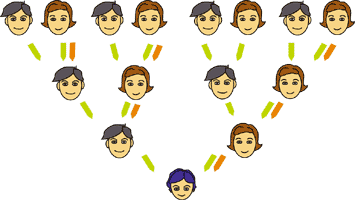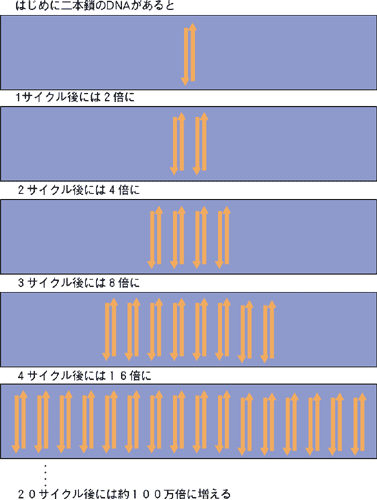|
Fig. 1 Half of chromosomal DNA (located in nucleous) derives from farther and the other half derives from mother (indicated with green arrows). Maternal mitochondrial DNA, but not petarnal, transfer to a child (indicated with red arrows). In this figure, one mutation in the child's choromosomal DNA possibly came from one of his 8 grand fathers and mothers. However, a mutation in the mitochondrial DNA only came from his mother's mother's mother. |


